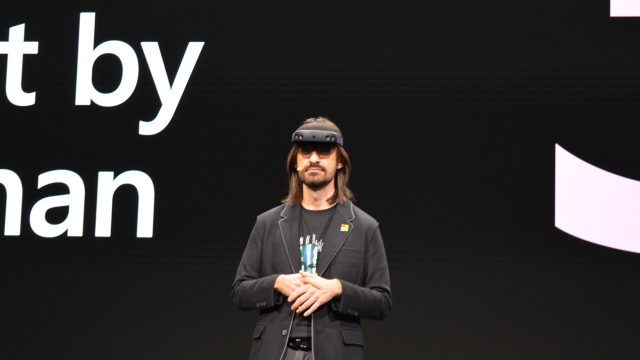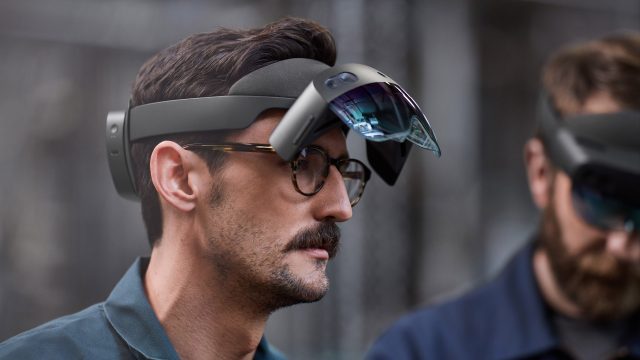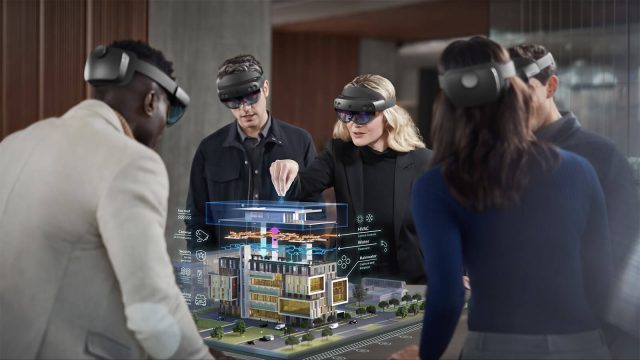Microsoft today revealed HoloLens 2 at MWC 2019 in Barcelona. The headset features a laser-scanning display which brings a field of view that’s more than 2x the original HoloLens and 47 pixels per degree.
HoloLens visionary Alex Kipman took to the stage in Barcelona to introduce HoloLens 2 which addresses many of the key criticisms of the original headset: field of view, comfort, and hand-tracking.

Kipman says that HoloLens 2 “more than doubles” the field of view of the original HoloLens, though hasn’t yet specified exactly what the field of view is. The original HoloLens field of view was around 35 degrees, so HoloLens 2 is expected to be around 70 degrees.
Of course, there’s a direct inverse relationship between field of view and resolution, because as you stretch the field of view you reduce pixel density. HoloLens 2 retains it’s high 47 pixels per-degree despite the jump in field of view. Kipman said the headset targets 47 PPD because that’s the bar for legibly reading 8-point font on a website. For comparison, contemporary VR headsets like Vive Pro are around 16 PPD.

HoloLens 2 is also designed to be more comfortable, with much of the headset’s bulk balanced in the back of the headset. Kipman said HoloLens 2 “more than triples the comfort” over the original HoloLens… though the exact weight, and how they came to that specific figure, is unclear. Still, the front portion of the headset is said to be made entirely from carbon fiber to cut down on weight and offers a convenient flip-up visor.
HoloLens 2 also brings hand-tracking which goes much further than the coarse gesture control in the original headset. Now with full hand-tracking, users can interact much more directly with applications by touching, poking, and sliding controls directly rather than using abstract gestures.

The headset is also equipped with eye-tracking. Although Microsoft didn’t go into detail about its capabilities, it is said to be “real-time” eye-tracking and the company noted that it’s capable of being used for biometric authentication (and presumably user recognition), which ought to be very useful for enterprise use-cases.
Microsoft says that HoloLens 2 will be available for $3,500 (putting it squarely in the non-consumer category), and pre-orders are available starting today. The company says it will also offer the headset in bundles with Dynamics 365 Remote Assist starting at $125 per month.
Check out our dive into what’s known (and not known) about HoloLens 2 specs here.
– – — – –
HoloLens was was category-defining first-gen AR headset introduced in early 2015. Microsoft initially launched HoloLens as a dev kit in early 2016 and later that year made it available in a ‘Commercial Suite’ edition that was positioned toward enterprises. Through 2017 and 2018 the company steadily grew the headset’s distribution channels and options: opening official third-party resales and rentals, expanding regional availability, offering a certified hard hat option for the headset, and launching first-party software tools for enterprise visualization and remote help. And to top it all off, Microsoft recently landed a $480 million defense contract to provide the US Army with AR headsets, which is almost certainly based on HoloLens 2 technology rather than the first-generation headset.






